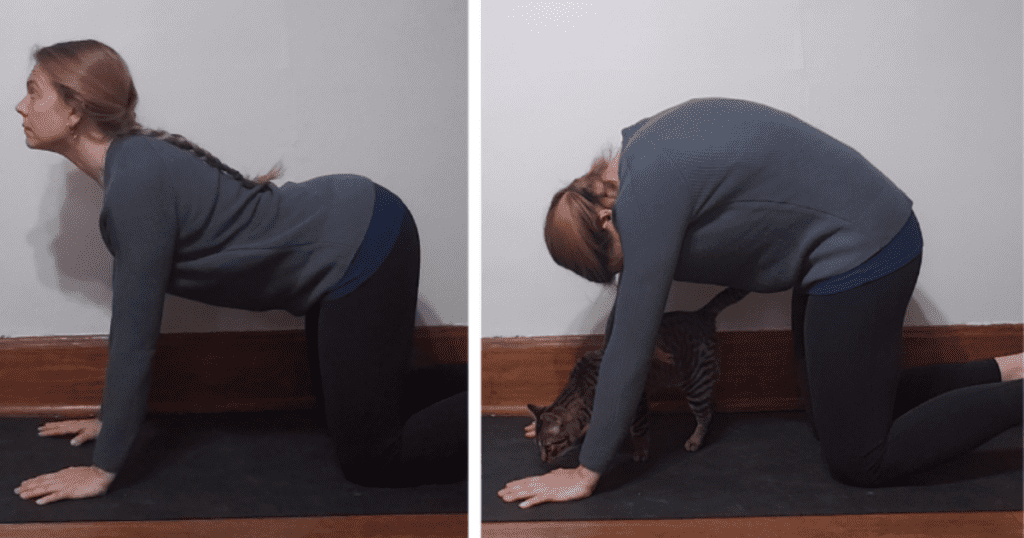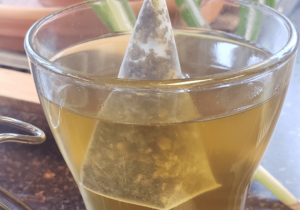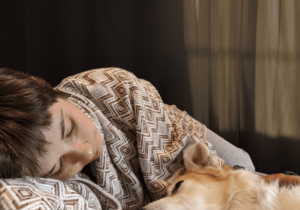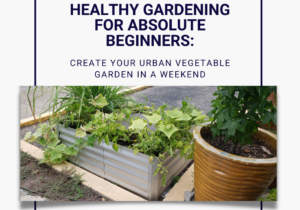Yoga Flow for Stress Relief – 7 Poses to Boost Your Mood
It’s not easy being a human! We have to-do lists, obligations, feelings to manage, bodies to maintain…it can get overwhelming quickly. Strategies for stress relief can be a lifesaver, and a quick yoga flow can really turn your day around.
"Stress" has several definitions, many of which have a negative connotation. Really, stress is a neutral term for changes in the environment, events that occur, and how bodies respond and adapt to those changes or events. Science shows that experiencing stress is not inherently bad, and is likely an important part of how we adapt and grow In that way, “stress” is like other major components of health - exercise, food, and sleep - in that we are aiming to acquire the optimum amount, and improve our ability to respond positively to it.
There is no doubt that stress can cause trouble. Too much stress can lead to headaches, digestive trouble, fatigue, body aches, poor quality sleep, and increase symptoms of depression and anxiety. We get overtired mentally and physically, and can start to lose motivation and withdraw from activities and people we enjoy. A cycle begins and the mental/emotional state effects the physiology, which in turn affects the mental/emotional state. It is challenging to get out of that funk!
Posture for stress relief
Yoga has long been practiced to calm the body and mind, and is a powerful way to break up that cycle and help manage how we respond to stress. Research supports that yoga can in fact combat stress and reduce negative symptoms. Even a few movements can immediately boost your mood! In fact, evidence suggests that our posture truly impacts our mood.
Putting effort into good posture is a way to improve our outlook and emotional state without having to think about it.
Yoga flow sequence
Here is a simple yoga flow to try whenever you are feeling overstressed or down
Yoga flow simply means doing the poses in sequence one after another. Awareness of your breathing is equally important as the movements. It’s ok to adjust the movements to meet your body’s needs, so feel free to adjust the pose, while being sure to not hold your breath.
Tadasana
Tadasana or equal standing strengthens the postural muscles and is great for grounding, centering, and practicing awareness.
How to do it:
Start in a comfortable standing position. Feel your feet evenly connected to the ground. Inhale and sweep your arms overhead. Exhale and release. Repeat for 3 - 5 breaths
Cat Cow
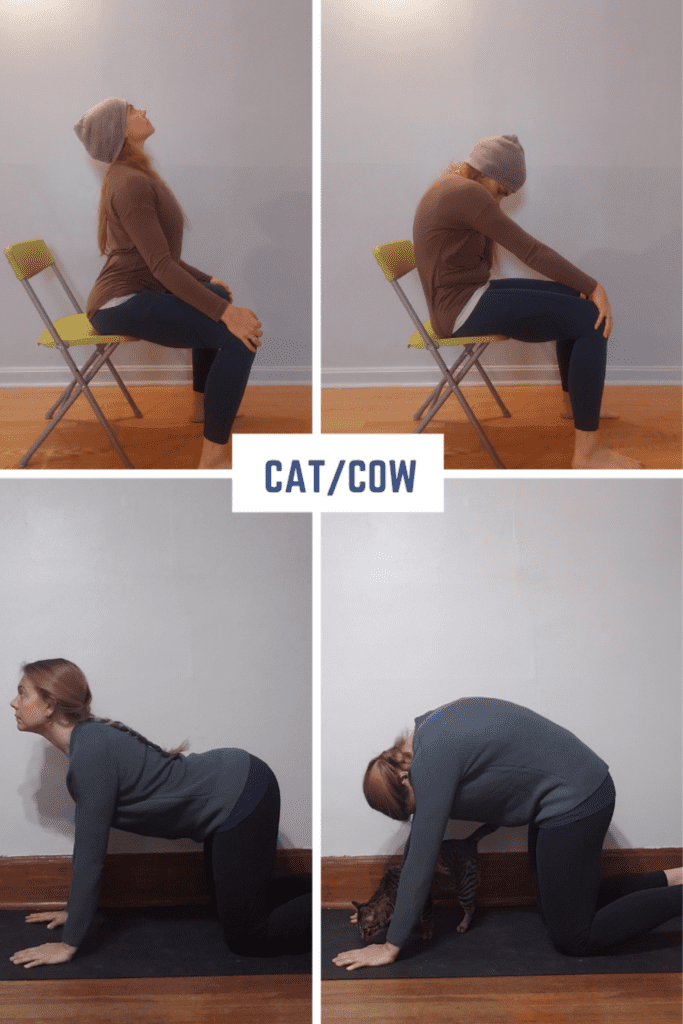
Marjaryasana/Bitilasana or cat/cow pose stretches and strengthens the core muscles while mobilizing the spine. Its versatility makes it a favorite. Feel free to move, stretch and wiggle in any way that feels good to you.
How to do it:
Either on hands and knees or sitting in a chair, relax the shoulders to release tension in the upper back. Exhale, gently hug the belly in, tuck the tailbone and round through the back and stretch the area between the shoulder blades. With the inhale, soften the belly, untuck the tailbone and arch the back.
Down dog
Adho Mukha Svanasana or down dog is an all-in-one pose. It strengthens the upper body, lengthens the spine, helps with posture and boosts circulation.
How to do it:
From the ground, start in a plank position with the hands spread wide and evenly on the ground underneath the shoulders. Hug in the belly and lift the hips up to the ceiling. Keep the arms strong and straight to keep the spine long and neutral. Don’t worry if your legs aren’t straight or your heels don’t touch the ground. Take 3 - 5 deep belly breaths.
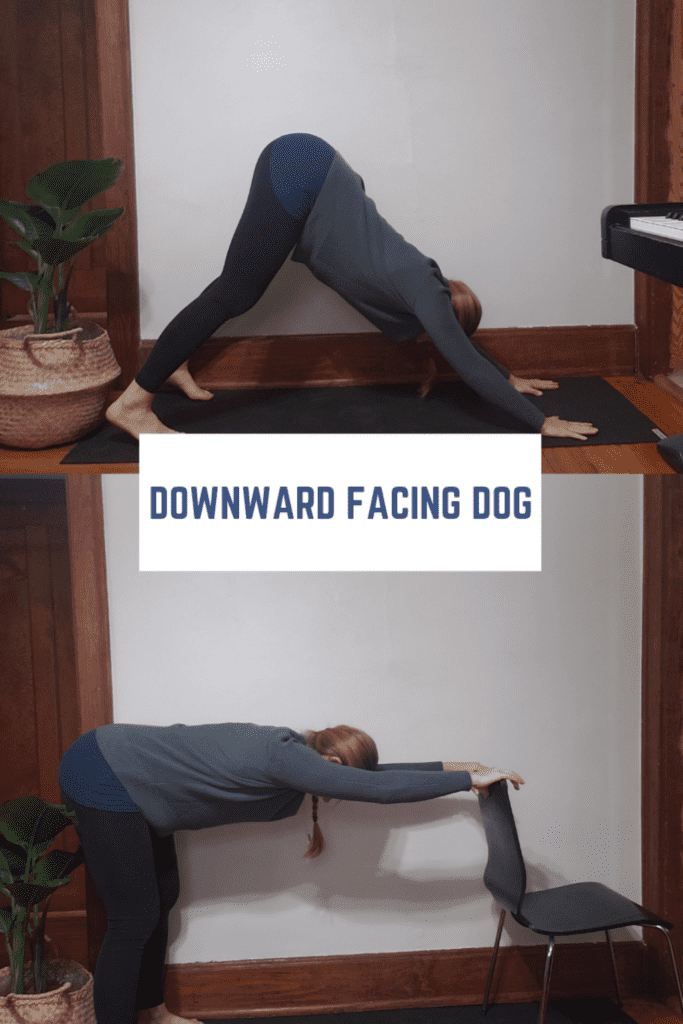
Warrior II
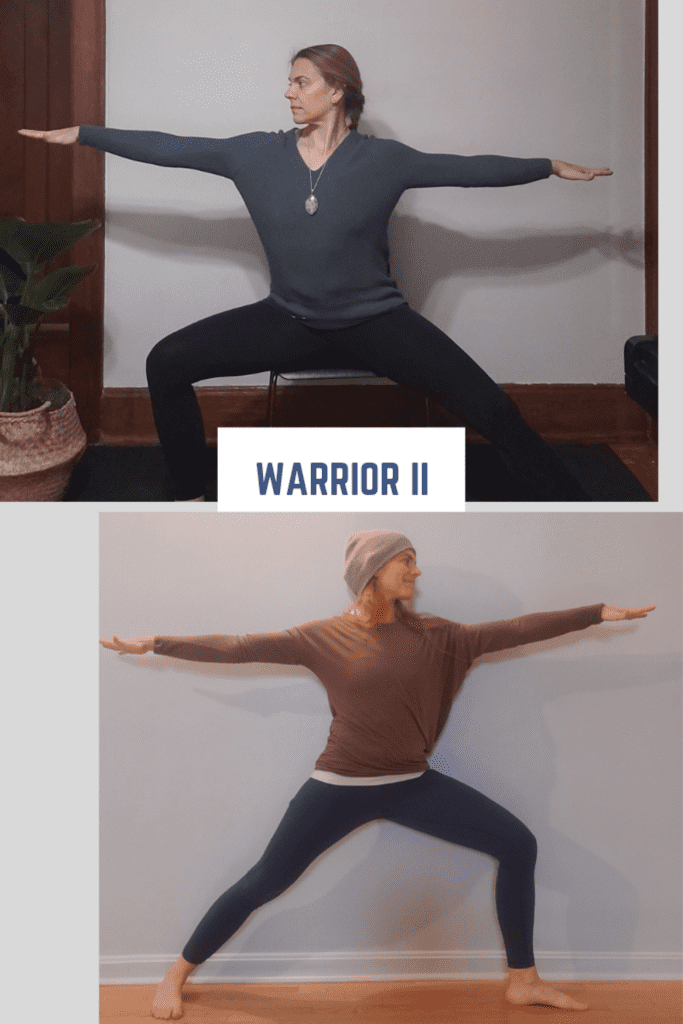
Virabhadrasana II or Warrior II stretches the hips, opens the heart, and stimulates circulation and energy flow.
How to do it:
Step one foot forward into a lunge position, open the hips, and turn the opposite foot so that it is flat on the ground. Extend the arms so they are parallel to the ground. Take 3 - 5 breaths, keeping the jaw, neck and shoulders soft. Repeat on the other side.
Star pose
Utthita Tadasana or Five Pointed Star Pose strengthens and energizes the body. Holding the arms out wide and lifting the gaze may boost confidence and self-esteem.
How to do it:
Take the feet as wide as your are comfortable, with feet parallel. Stretch the arms out and overhead to make a star shape with your body. Lift your gaze and breath deeply.
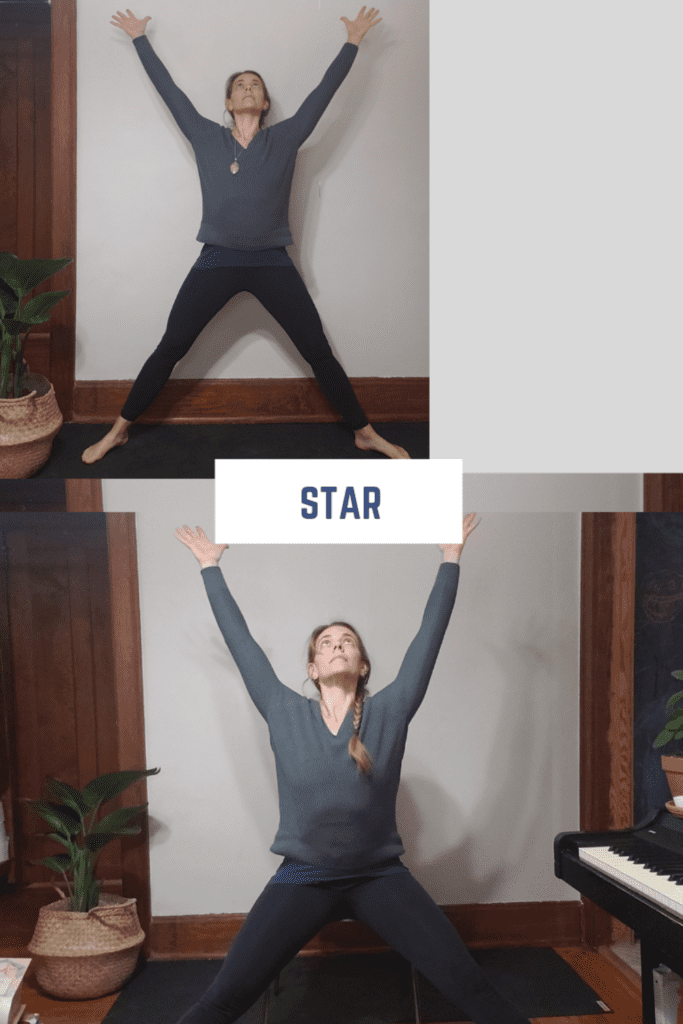
Pigeon pose
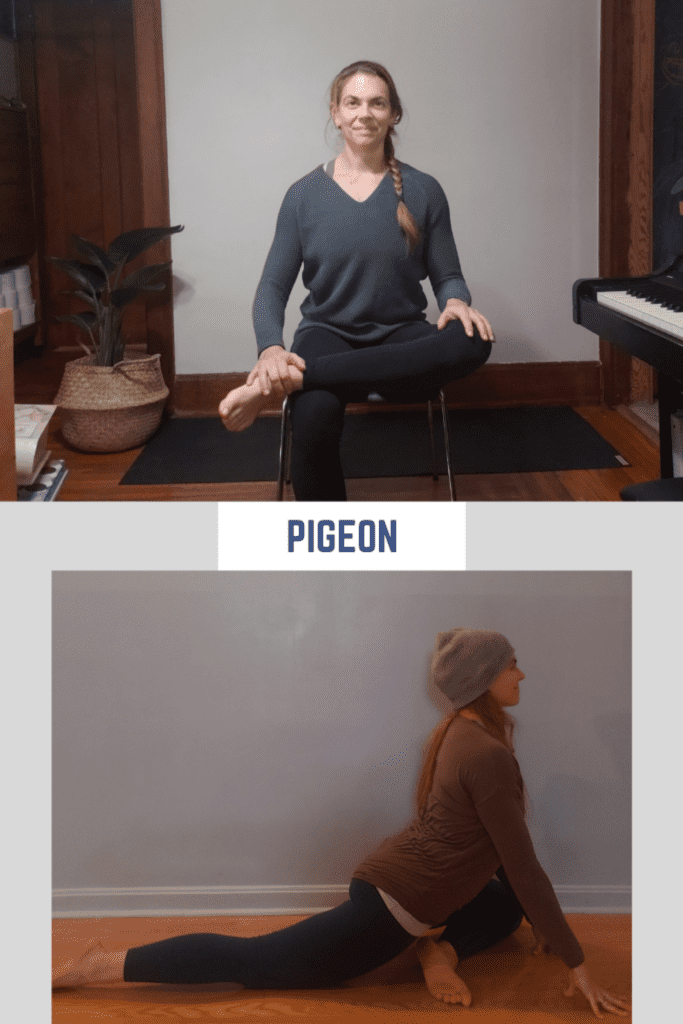
Eka Pada Kapotasana or pigeon pose is a strong hip opener and hip flexor stretch. Not only does reducing tension in the hips feel good, but according to many schools of thought, stress and emotions are stored in the hips and can be released through this pose.
How to do it:
On the ground, from a plank position, bring one knee toward the hand on the same side. The front leg is bent with the hip open and the shin under the body. Stay here for as many deep breaths as you like. Switch sides.
Alternatively, sit in a chair and cross one ankle over the opposite knee. Keep the hip open and aim to have shin parallel to the ground.
Legs up wall
Viparita Karani or legs up wall pose is a powerful restorative pose stress relief. It allows the psoas to relax, improves circulation from the lower body, and is an easy pose to relax and focus on deep belly breathing in.
How to do it:
Lying down, scoot your hips close to a wall and let your legs rest straight up. Alternatively, lie down and let your legs rest on a chair, stability ball, or pillows stacked. This is a wonderful position to hold for several minutes.

Practice these poses individually or put them together in a yoga flow for stress relief as a simple and lovely mood boosting movement break anytime you need one!
Sarah Gardocki wants to be your gym guide and fitness friend. As a personal trainer and health educator who has been working to support pre- and postnatal women since 2005, she loves to create comfortable spaces and connect folks to the resources that best support their own personal goals. Find other articles written by Sarah on her coach profile. Let Sarah help you experience how confidence in the gym can impact all areas of your life!


